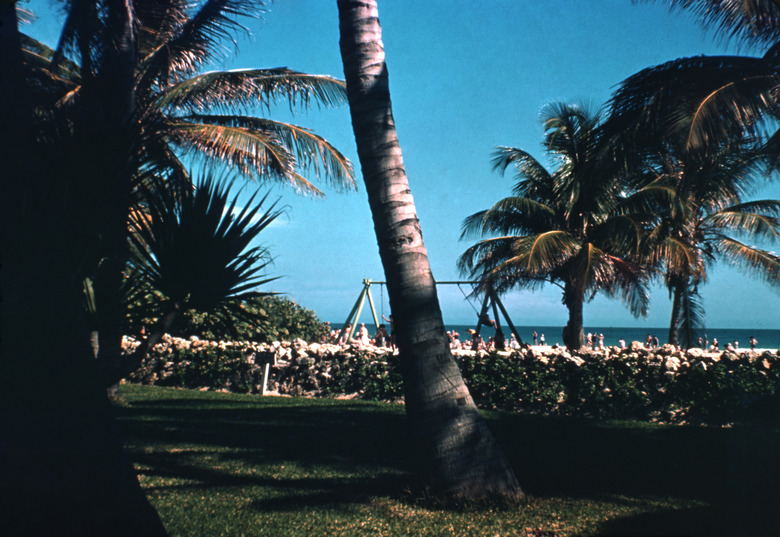The Best Grass For Shady Areas In Florida
We may receive a commission on purchases made from links.
Florida's climate is tropical and subtropical, so to grow a lush, verdant lawn, a warm-season grass is best. When it comes to the best grass seed for shade in Florida, the geographical zone you live in will influence the variety of grass to grow.
Two Primary Grass Types
Two Primary Grass Types
There are two types of grasses, cool-season and warm-season. Each is adapted to different growing conditions.
Warm-season grass is suited for Florida's hot weather and can tolerate some drought. But if you plant warm-season grass seed in a shady area, it may be difficult to grow and maintain because it might not receive sufficient sunlight, water, and nutrients. The climate in Northern Florida can be colder so a cool-season grass is a better choice for this region. Cool-season grasses handle cooler temperatures and grow best in milder climates. Warm-season grasses are adapted to hotter temperatures.
Shade-Tolerant Grass Varieties
Shade-Tolerant Grass Varieties
Many experts recommend the warm-season grass St. Augustine (Stenotaphrum secundatum) for hot but shady locations because it can tolerate both shade and full sun and is considered one of the best grasses for shade in Florida. Most varieties of St. Augustine grass like full sun, but can thrive in as little as four to five hours of direct sunlight, including the cultivars 'Seville' and 'Delmar.' You might see 'Floratam' seed sold; this is a common St. Augustine cultivar, but it isn't shade tolerant because it needs a minimum of eight hours of sunlight per day.
Another shade-tolerant grass is zoysia grass (Zoysia spp.) which can tolerate growing in the shade but prefers full sun, upwards of eight hours of direct sunlight per day.
Many varieties of zoysia grass are adapted to Florida's varied climate. Zoysia grass grows slower than many other types of grass, including St. Augustine, and needs to be watered more frequently. Both grasses can grow in different types of soil, but St. Augustine prefers loamy or sandy soils, whereas zoysia can also grow in clayey soil. St. Augustine grass can tolerate salt more than zoysia grass and is often grown in areas near the Florida coast.
The cool-season grass tall fescue (Festuca arundinacea) is a shade-tolerant grass that grows well in North Florida and needs four to six hours of sunlight.
When to Plant
When to Plant
Growing grass from seed is easier and more economical than installing sod. If you are planting the recommended warm-season grasses St. Augustine or zoysia, sow seed from April to July so the seeds have ideal temperatures to germinate and grow before colder weather arrives.
Most varieties of grass seed grown in Florida need to have a minimum of six hours of sunlight per day, and some can tolerate dappled light, such as sunlight being filtered by trees.
Growing Grass Under Trees
Growing Grass Under Trees
Growing grass under trees poses challenges since the grass will have less exposure to sunlight. Grass will also be competing directly with the tree for the same resources, including soil nutrients and water.
It's possible you may need to trim or cut branches so the lawn receives more sunlight so it can grow well. Grass grown under a tree will need to be watered more frequently because the tree canopy is likely to block natural rainfall. Also, consider adding a natural fertilizer, such as compost, for a nutrient boost.
